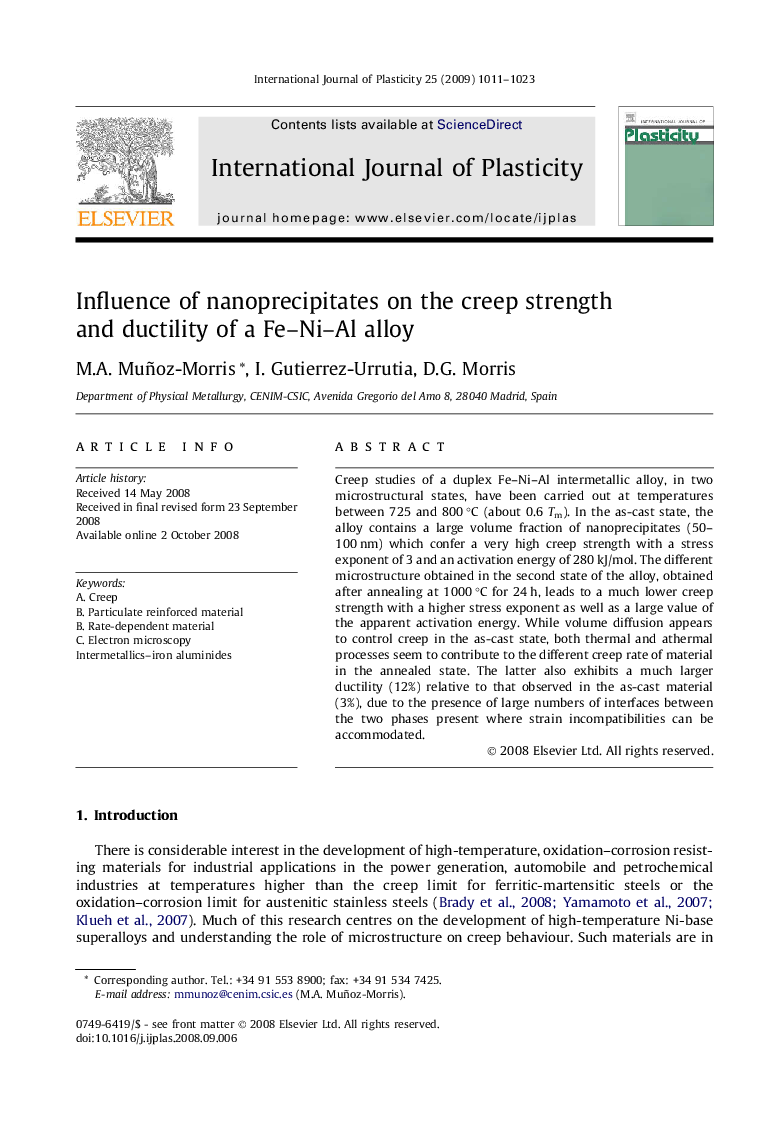| Article ID | Journal | Published Year | Pages | File Type |
|---|---|---|---|---|
| 786549 | International Journal of Plasticity | 2009 | 13 Pages |
Creep studies of a duplex Fe–Ni–Al intermetallic alloy, in two microstructural states, have been carried out at temperatures between 725 and 800 °C (about 0.6 Tm). In the as-cast state, the alloy contains a large volume fraction of nanoprecipitates (50–100 nm) which confer a very high creep strength with a stress exponent of 3 and an activation energy of 280 kJ/mol. The different microstructure obtained in the second state of the alloy, obtained after annealing at 1000 °C for 24 h, leads to a much lower creep strength with a higher stress exponent as well as a large value of the apparent activation energy. While volume diffusion appears to control creep in the as-cast state, both thermal and athermal processes seem to contribute to the different creep rate of material in the annealed state. The latter also exhibits a much larger ductility (12%) relative to that observed in the as-cast material (3%), due to the presence of large numbers of interfaces between the two phases present where strain incompatibilities can be accommodated.
